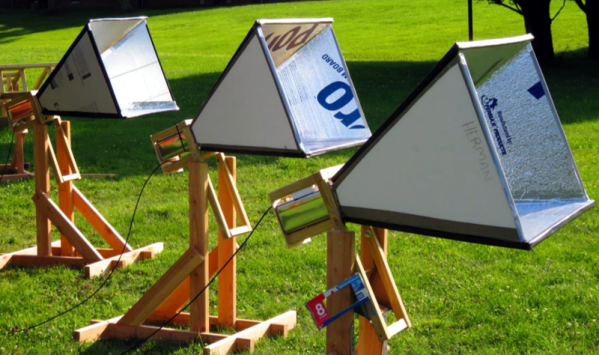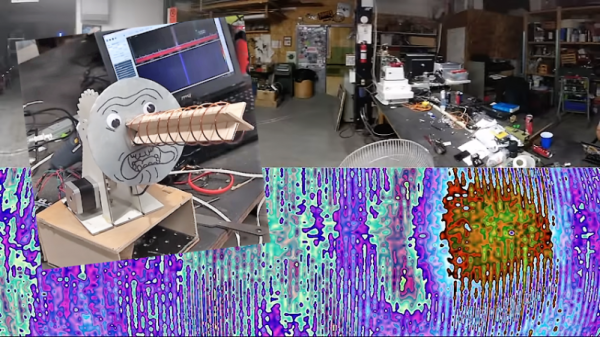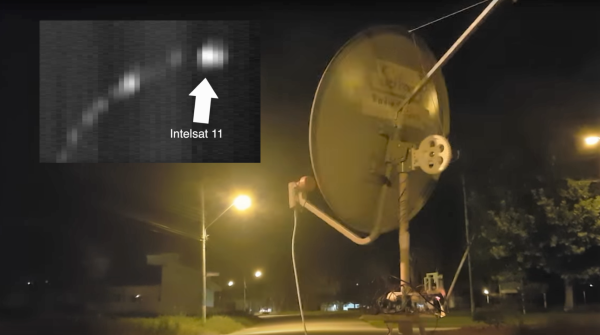Who doesn’t like to look up at the night sky? But if you are into radio, there’s a whole different way to look using radio telescopes. [John Makous] spoke at the GNU Radio Conference about how he’s worked to make a radio telescope (PDF) that is practical for even younger students to build and operate.
The only real high tech part of this build is the low noise amplifier (LNA) and the project is in reach of a typical teacher who might not be an expert on electronics. It uses things like paint thinner cans and lumber. [John] also built some blocks in GNU Radio that made it easy for other teachers to process the data from a telescope. As he put it, “This is the kind of nerdy stuff I like to do.” We can relate.
The telescope is made to pick up the 21 cm band to detect neutral hydrogen from the Milky Way. It can map the hydrogen in the galaxy and also measure the rotational speed of the galaxy using Doppler shift. Not bad for an upcycled paint thinner can. These are cheap enough, you can even build a fleet of them.
This would be a great project for anyone interested in radio telescopes or space. However, it is particularly set up for classroom use. Students can flex their skills in math, engineering, programming, and — of course — astronomy and physics.


















